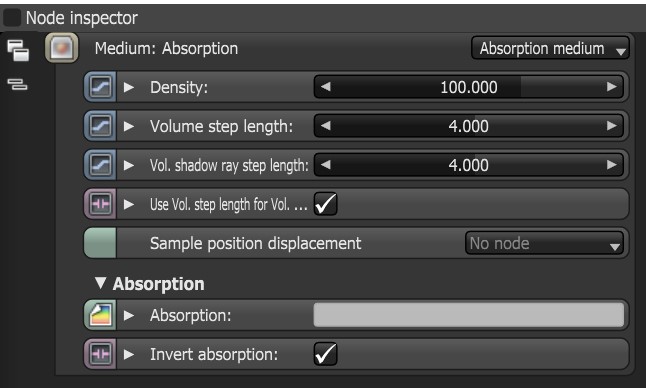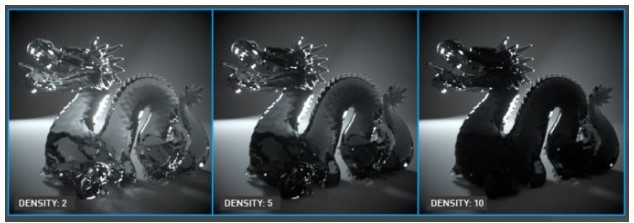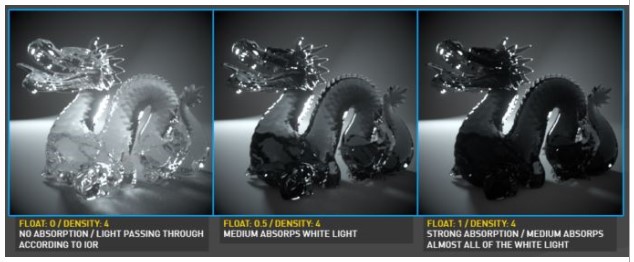
AbsorptionDefines how fast light is absorbed while passing through a medium. is controlled with the absorption node (figure 1), which defines how fast light is absorbed while passing through a medium.

Figure 1: The Absorption Medium parameters as seen in the NodeGraph Editor.
Density
Controls the absorption density. A higher value will absorb more light (figure 2).

Figure 2: Increasing the Density parameter.
Volume Step Length
Only applicable when rendering Volume mediums. This attribute may need to be adjusted depending on the surface. The default value for the step length is 4 meters. Should the volume be smaller than this, the step length will need to be decreased. Please note that decreasing this will reduce the render speed. Increasing this value will cause the ray marching algorithm to take longer steps. Should the step length far exceed the volume’s dimensions, then the ray marching algorithm will take a single step through the whole volume. Most accurate results are obtained when the step length is as small as possible.
Volume Shadow Ray Step Length
Step length that is used by the shadow ray for marching through volumes.
Use Volume Step Length for Volume Shadow Ray Step Length
Check box for using the Volume Step Length for the Volume Shadow Ray Step Length as well.
Absorption
Determines the absorption value of the material by assigning a texture. This can be either a grayscale or color texture. When using greyscale values, 0 (black) means that there is no absorption. Values greater than zero determine how quickly the medium absorbs white light (figure 3).

Figure 3: Using a grayscale value to control absorption.
Absorption can also be controlled using color values. The observed color is the complementary color (opposite color) of the specified color value (figure 4).

Figure 4: Using color values to determine absorption.
Invert Absorption
Inverts the absorption value allowing the specified absorbed color to be the actual color that is visible.
The Schlick node can be used to control which direction the scattering occurs.